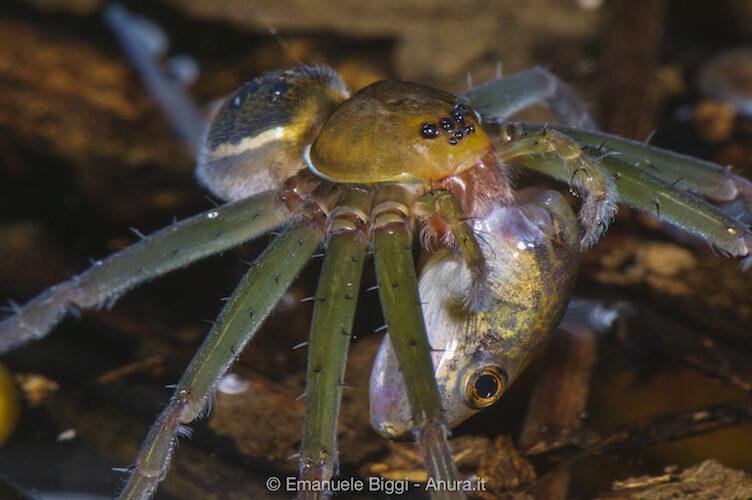1 of 4 | Scientists photographed a fishing spider eating a tadpole. Photo by Emanuele Biggi/Amphibian and Reptile Conservation
Feb. 28 (UPI) -- Biologists have documented 15 new predator-prey interactions between deadly Amazonian arthropods and a variety of vertebrates, including a plate-sized tarantula dragging a baby opossum across the rainforest floor.
Researchers from the University of Michigan observed spiders, centipedes and water bugs catching and eating frogs, tadpoles, lizards and snakes. Scientists described the novel predator-prey interactions this week in the in the journal Amphibian and Reptile Conservation.
"This is an underappreciated source of mortality among vertebrates," Daniel Rabosky, an associate professor of ecology and evolutionary biologist at Michigan, said in a news release. "A surprising amount of death of small vertebrates in the Amazon is likely due to arthropods such as big spiders and centipedes."
Rabosky and his research partners observed large spiders and centipedes eating unusual dinners over the course of several years during field work among the lowland Amazon rainforest at the base of the Andes.
"We kept recording these events, and at some point we realized that we had enough observations to put them together in a paper," Rabosky said.
Of all the grisly encounters witnessed by researchers, a mygalomorph spider feeding on an opossum was undoubtedly the most exciting -- and something scientists had never observed before.
"We were pretty ecstatic and shocked, and we couldn't really believe what we were seeing," said Michael Grundler, Michigan PhD student. "We knew we were witnessing something pretty special, but we weren't aware that it was the first observation until after the fact."
Scientists also observed a large centipede eating a coral snake that it decapitated.
"Coral snakes are very dangerous and can kill humans," said Joanna Larson, a doctoral candidate at Michigan. "To see one taken down by an arthropod was very surprising. Those centipedes are terrifying animals, actually."
It's near impossible to do justice to the complexity of Amazonian food webs. There are too many hungry predators and a plethora of feeding opportunities.
"Where we do this research there are about 85 species of amphibians -- mostly frogs and toads -- and about 90 species of reptiles," said Rudolf von May, a postdoctoral researcher in Rabosky's lab. "And considering that there are hundreds of invertebrates that potentially prey upon vertebrates, the number of possible interactions between species is huge, and we are highlighting that fact in this paper."















